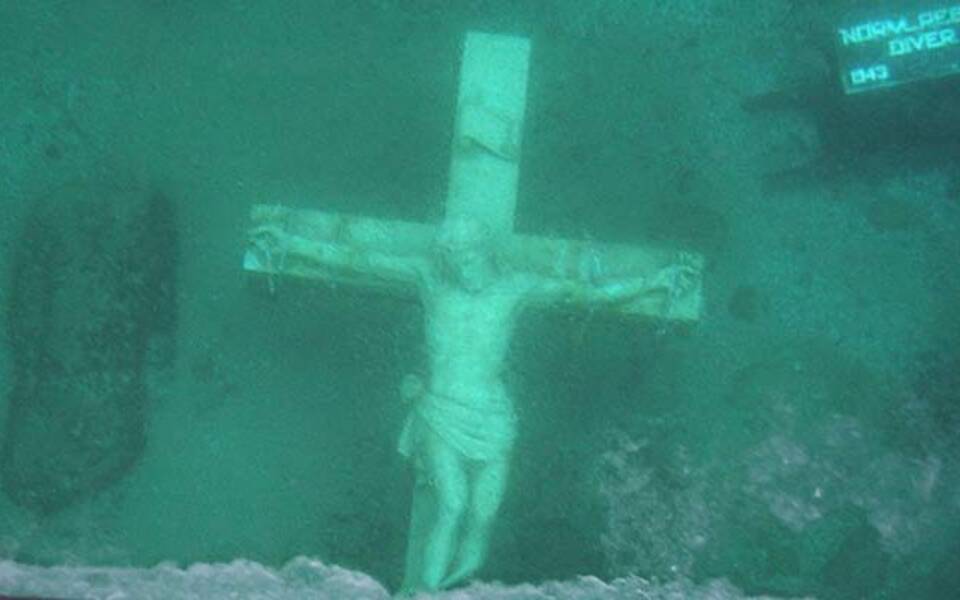
Underwater Crucifix
About 800 feet offshore and under 21 feet of water lies an Italian white marble crucifix, the only known freshwater-underwater crucifix. It came to Petoskey in 1962 in a round-about way, and has become a draw for divers and visitors alike ever since. You will not find a shrine like this anywhere else in the U.S.
The 11-foot tall crucifix, with a 5-foot 5-inch figure of Jesus Christ, was placed in the Bay, near the Petoskey breakwall at Bayfront Park, by the Wyandotte-based Superior Marine Divers Club in 1962. Its original intent was to honor Charles Raymond, a Southgate diver who drowned in Torch Lake. Later, the club expanded the focus of the monument to memorialize all those who have perished at sea.
Its origins date back to the late 1950s, when a grieving mother and father from Rapson in Michigan’s Thumb area had it crafted in memory of their son, Gerald Schipinski. Gerald was 15-years-old in 1956 when he was accidentally killed by a shotgun on the family farm.
After being crafted in Italy, the cross was broken during shipping to the Rapson Catholic church; the family rejected the damaged crucifix and it was sold in an insurance sale to the Wyandotte dive club. The crucifix made its way to Little Traverse Bay and was first placed by the U.S. Icebreaker Sundew 1,200 feet off the Petoskey breakwall on Aug. 12, 1962.
The event drew hundreds of people and several dignitaries. The actor Lloyd Bridges was invited, but he sent a telegram to event organizers declining the invitation due to a heavy film-shooting schedule. Bridges’ telegram is kept in a thick binder of memorabilia preserved by Jessick and his wife, Susan.
About 20 years after the original installation of the crucifix in the Bay, the Michigan Skindiving Council tried to salvage what they could of the structure. It was lifted from the water and a new base was built in the Petoskey marina over the course of a day, and it was replaced in the Bay.
At that time – in the early 1980s – Dennis Jessick was president of the Little Traverse Bay Dive Club, and he proposed a winter viewing of the crucifix. The first was held in 1986, affording the community the chance to view the statue through a hole made in the ice. Lights are placed under water to help with viewing. The viewing of the crucifix,” as the locals call it, has continued.
The viewing of the Crucifix is always free and takes place if the ice is thick enough and other weather related conditions are right, usually in the end of February or early March. A tent is set up at the viewing area – which is a sure sign to the public that the viewing is taking place. It is also publicized in local media and on local Chamber of Commerce and Visitors’ Bureau web sites.

